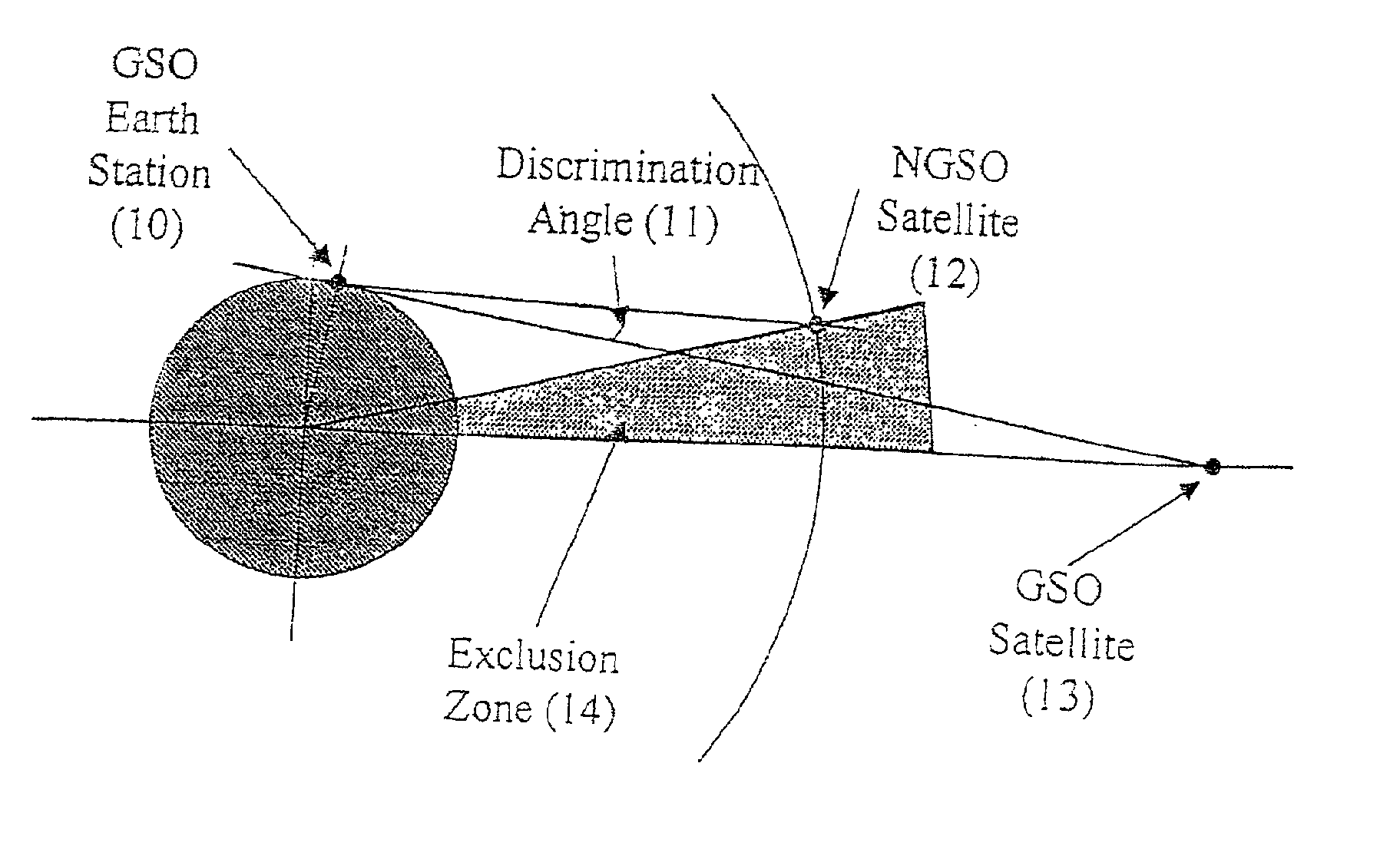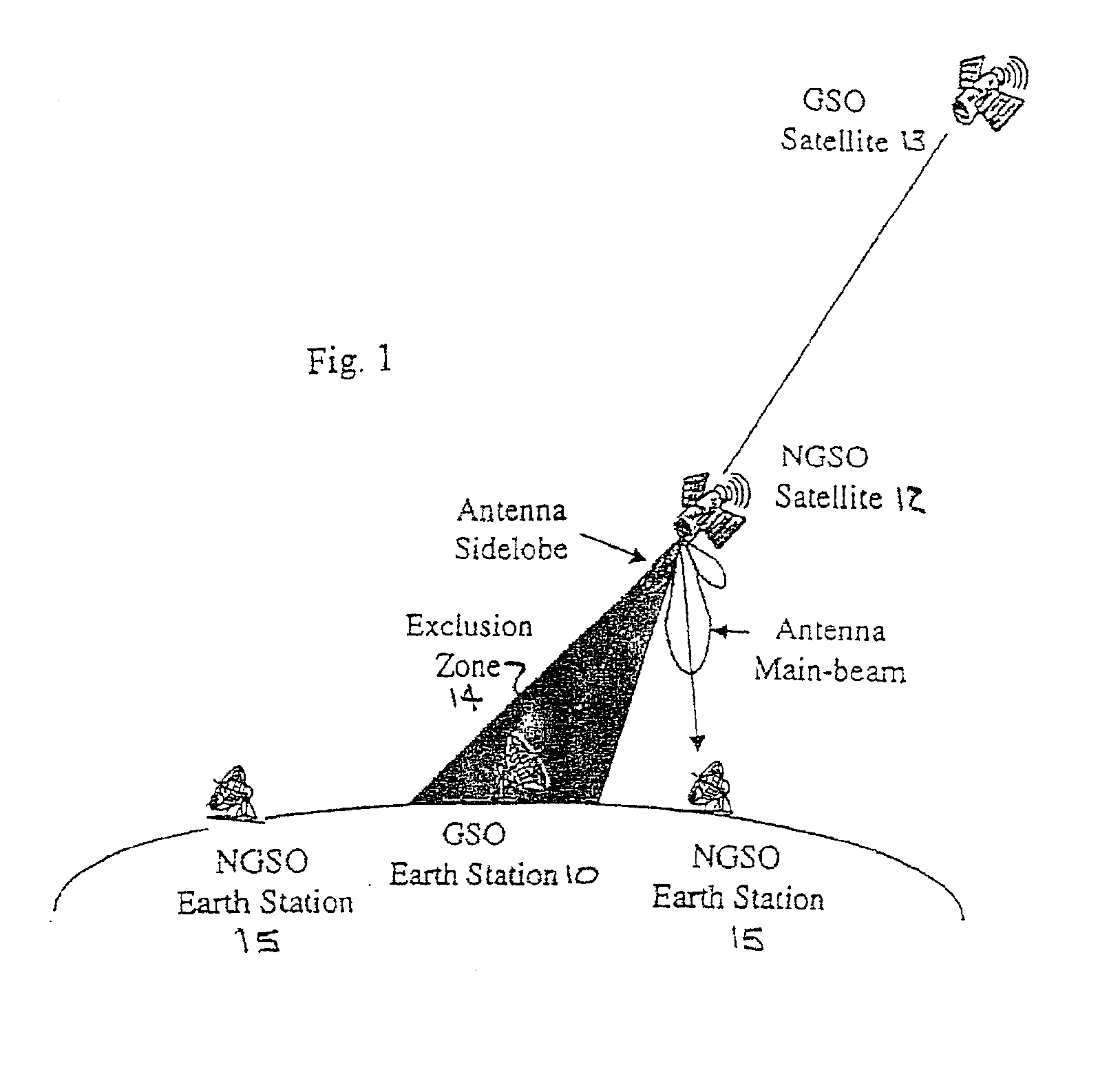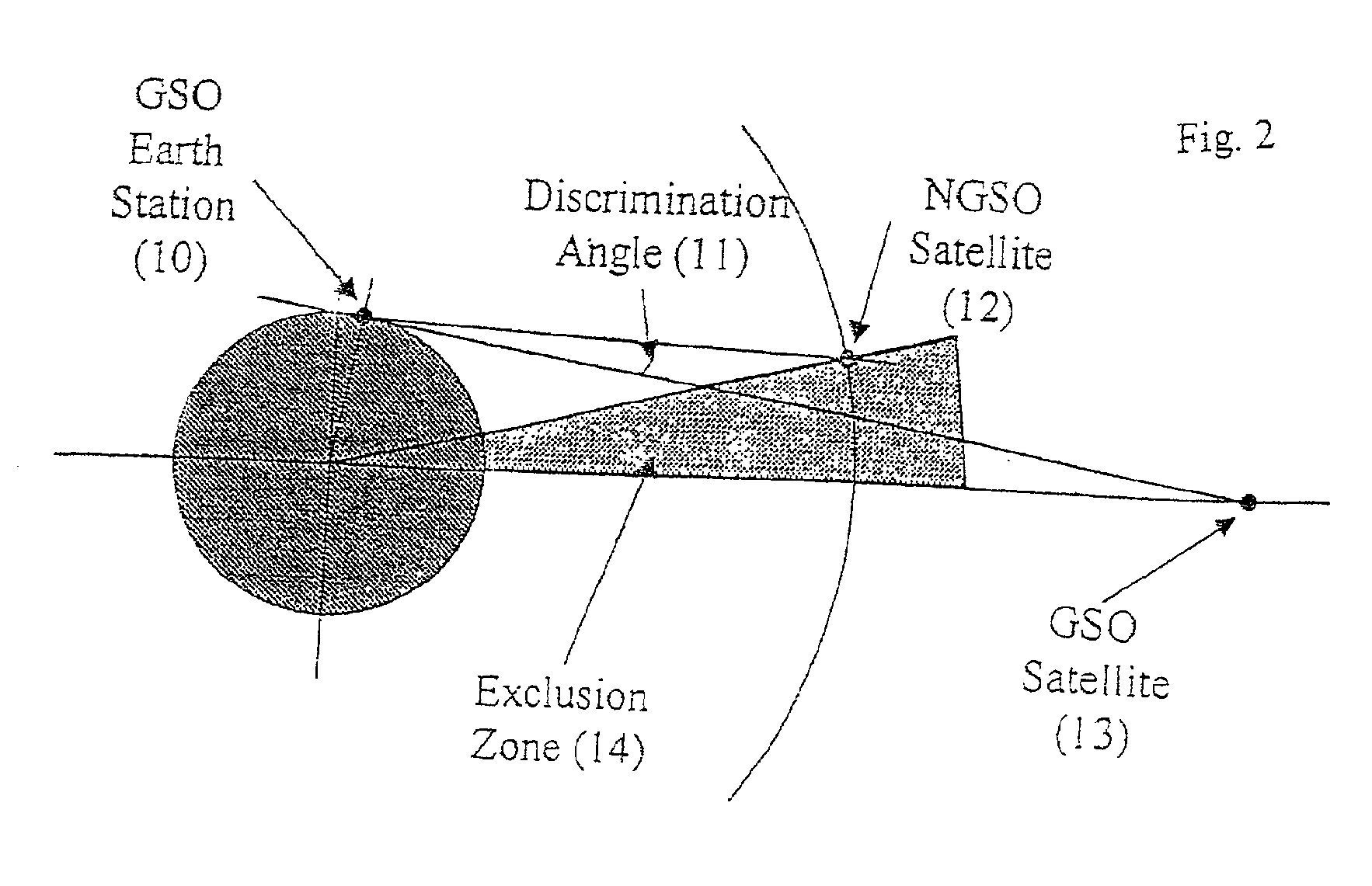Method for limiting interference between satellite communications systems
- Summary
- Abstract
- Description
- Claims
- Application Information
AI Technical Summary
Benefits of technology
Problems solved by technology
Method used
Image
Examples
Embodiment Construction
1. Interference Avoidance
In a preferred embodiment, an NGSO satellite 12 (FIG. 2) operates at an altitude of about 20,000 km. Obviously, a satellite at lower or higher altitudes could also work with the inventive method, but MEO is the preferred altitudes with a lower practical limit likely of about 10,000 km. LEO places the satellites too close to the earth. The exclusion angle becomes large to achieve satellite diversity (as much as 80%) so the constellation requires an impractical, large number of satellites. The interference avoidance technique of the present invention involves satellite diversity. To minimize the interference to a GSO satellite system consisting of a GSO earth station 10 and a GSO satellite 13, the NGSO satellite 12 turns off all transmissions when it enters an exclusion zone 14 around the equator. In the present implementation of the invention, the exclusion zone is ±15 degrees latitude. Coverage of areas within the exclusion zone is accomplished by handing of...
PUM
 Login to View More
Login to View More Abstract
Description
Claims
Application Information
 Login to View More
Login to View More - R&D
- Intellectual Property
- Life Sciences
- Materials
- Tech Scout
- Unparalleled Data Quality
- Higher Quality Content
- 60% Fewer Hallucinations
Browse by: Latest US Patents, China's latest patents, Technical Efficacy Thesaurus, Application Domain, Technology Topic, Popular Technical Reports.
© 2025 PatSnap. All rights reserved.Legal|Privacy policy|Modern Slavery Act Transparency Statement|Sitemap|About US| Contact US: help@patsnap.com



